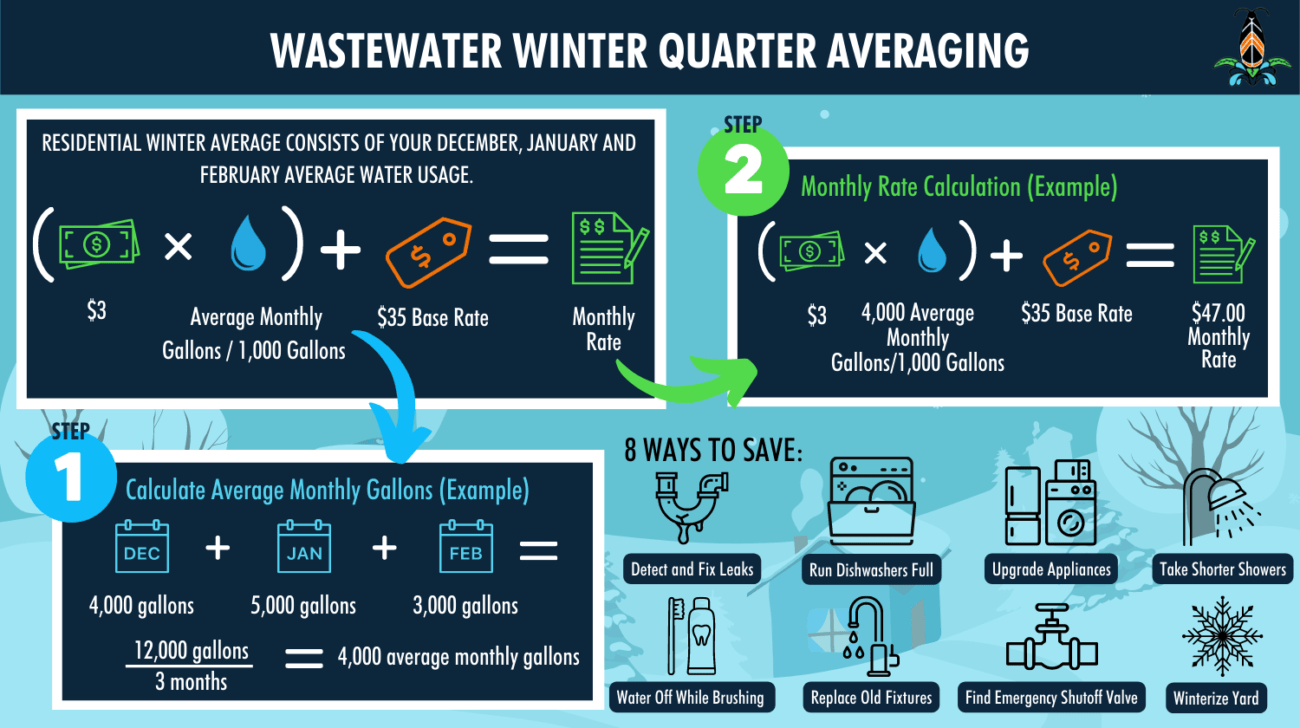What’s in a Rate? Breaking Down How Boxelder Service Rates Are Set

What’s something everyone likes? Uninterrupted wastewater sanitation services. What’s something everyone dislikes? Escalating utility bills. For customers of Boxelder Sanitation District, the latter won’t be an issue in 2023 as we’re expecting to maintain our current rates. Here at the District, we do everything in our power to keep rates as low as possible while continuing the same efficient and reliable service our customers expect.
Rates, however, can seem a bit mysterious when you’re staring at the monthly bill. So, for this blog, we’re peeling away some of that mystery, giving you some insight into what factors impact the service charge, how we determine rates each year, and what we do to try to keep rates as affordable as possible.
Like this kind of deep dive into how Boxelder works? Don’t miss our recent blog about Demystifying Wastewater Collections. Now, onto rates!
That’s right! We’re not going to bury the lead. District customers can breathe a bit of relief knowing that their service fees for wastewater sanitation services will likely not increase in 2023. How is this possible? The District is taking a new approach, which we’re calling our “Recovery Philosophy.” In essence, it’s simple accounting—if operating expenses deem it fiscally possible that we don’t need additional revenue, rates will stay the same—but there are lots of factors at play.
The District is a Special District, which means we can only budget for one year at a time. With global and domestic factors at play, such as inflation, energy crises, labor shortages, pandemics, etc., and a short ability to plan, our control over rates fluctuates. All the more reason to take advantage of our ability to keep rates the same in 2023 while we can.
“How do you calculate service charges?” is one of the most popular questions we receive. It’s also one of the most important (second maybe to “My pipe is clogged, what do I do now?”). Understanding the factors that play into monthly billing is key to being an informed consumer. But it’s also on the District to be transparent about what impacts that bill. So, what goes into Boxelder’s service rates?
Cost of Operations
It’s probably no surprise that the biggest factor for determining rates is the basic expenses of the District—the cost of providing customers a service. Many of our fixed costs can be predicted and locked in. Those include treatment plant and sewer line operations, facility utilities, staff and administrative costs and office logistics.
These costs have been fairly consistent over the years, which helps maintain a predictable budget to keep rates low. However, there are a number of factors that are much harder to predict.
Major Repairs and Regular Maintenance
Maintenance and replacement can be major factors in overall costs—especially if the latter is involved. The good standing of our equipment, infrastructure and facilities is essential for operations, so maintenance and replacement are priorities and defining elements in determining rates. The District has implemented a number of strategies to help predict those costs and mitigate their impact on the bottom line. You can read all about them in a recent blog we wrote about the cost and strategy of maintaining infrastructure.
Inflation
Everyone’s feeling the pinch of inflation these days, and Boxelder is no exception. Inflation impacts the costs of parts for maintenance and repair— the result makes it more difficult for us to predict maintenance and repair costs for future budgets. Inflation also increases the cost of labor for capital projects like construction. Both of which directly impact the cost of overall operations and, in turn, the service rate.
Regulatory Changes
Change to government regulations is, like inflation, another factor outside of Boxelder’s control. Specifically, changes to state or federal regulations that could impact the level at which the District needs to treat wastewater. While we pride ourselves in matching or exceeding EPA standards, new regulations often result in new buildings, equipment or processes—all of which cost money.
Since these are mandated changes, failure to comply would not only cost the District in fees and penalties but would also negatively impact the health and safety of the District and our environment.
Growth
It cannot be understated enough that the District is largely reactive to area growth. Since city planning falls outside of our purview, we’re subject to where developers place their developments. That said, tap sales do play a role in the rates conversation and we do try to predict how tap sales will positively impact budgets on the revenue side.
Now that you have an overview of the internal and external forces impacting rates, you may be asking yourself, “What does Boxelder do to mitigate these factors?”
Efficiency is the key to keeping costs at a minimum, and that’s certainly a focus for both staff and the Board of Directors. Not only does efficiency factor into how we approach day-to-day operations—keeping a lean staff, being conscientious of expenses, etc.—but it also plays a major role in how we approach the long-term. This includes intense planning around infrastructure maintenance, smart and strategic upgrades, and thorough forecasting to help predict budgetary scenarios up to five years out—a big deal considering we can only budget one year at a time as a special district.
Additionally, we invest effort into customer communications because an informed customer base makes smart decisions. It’s important that we provide information around checking for leaks, reducing water usage, being conscientious of what you flush, eliminating FOG and more, because that ultimately reduces costs within the District.
Boxelder-What-Not-to-Flush-Guide.pdfNow that we’ve covered so much of what goes into costs, it’s time to ask the big question: How do we calculate your residential monthly rate? The answer is both fair and simple: Winter averages.
Every winter—specifically, the months of December, January and February—Boxelder works with water service providers operating in the District to calculate the average amount of water you used over the period. Why do we use the months of December through February? It’s because you are likely not using any water for irrigation during those months, giving us a more accurate representation of only the water you’re using that goes down your drains since this is the water that we treat.
Using that information, we then apply a $3 charge for every 1,000 gallons of water used and add that to the base fee of $35. If your winter average is 4,000 gallons of water, that’s a $12 addition to the $35 fee, resulting in a flat rate of $47 for the year. Keep in mind this only applies to residential customers, to see the current costs and charges for all customers including commercial, visit our Utility Billing page.

Given these uncertain times, with so many volatile external factors at play which we previously described, we feel that it’s advantageous for customers to work with flat rates, as opposed to rates that might fluctuate month to month. That also means that in times when there’s no rate increase, customers can bank on that for the entire year.
As it currently stands, Boxelder is in a strong financial position as a special district. That’s the main reason why we’re able to keep rates the same in 2023. So much of this is a result of strong leadership from the Board of Directors and daily efforts from staff. We also appreciate the amount of effort customers put into ensuring they’re doing their part at home.
Keep updated with all the happenings at the District by regularly visiting our blog! Or sign up for online bill pay to ensure you also receive our quarterly District newsletter.
